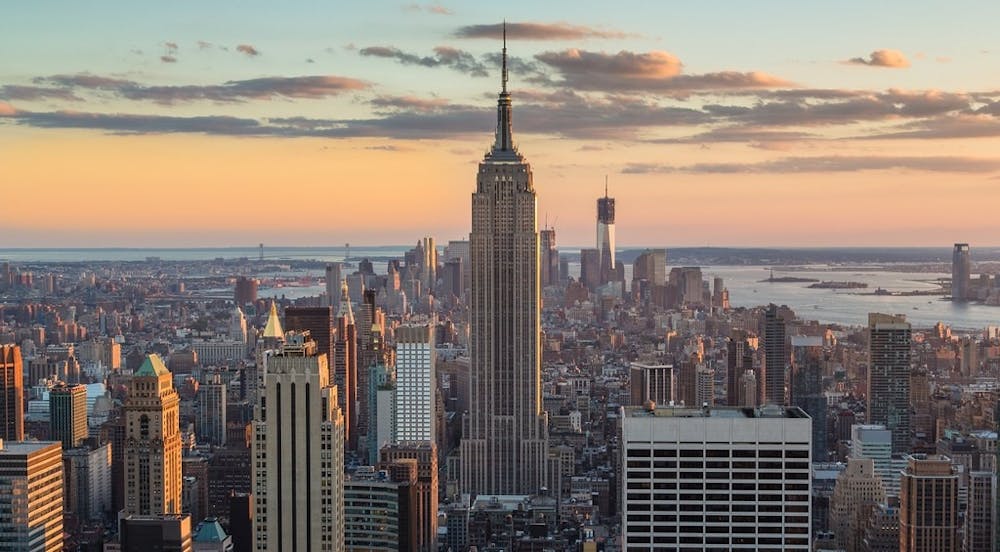Princeton students frequent New York City as an urban escape. Whether through an internship on Wall Street or a musical on Broadway, the Big Apple holds strong ties to the Princeton experience.
The city’s appeal to our students is compounded by its diversity. Hole-in-the-wall Tibetan restaurants lie adjacent to lively Ecuadorian cafes. Diplomats from Japan and Nigeria come together to discuss politics over Thai food. Regardless of origin, one can find a home within the millions of people living across the five boroughs.
Black, Latinx, Asian, and white New Yorkers, however, often live in different neighborhoods, with vastly disparate conditions. New York’s facade of diversity masks the fact that in the US, it’s the second most segregated city for Asian Americans and Latinx populations, and the third most segregated city for African Americans.
If we admire the city’s glamour, it’s only right that we study its underlying issues as well. While modern day segregation is — for the most part — not based on blatantly racist policies that declare “Whites Only,” the s-word didn’t disappear with the civil rights movement. Segregation in New York City is based on how zip code racially separates people and how that can determine quality of education, likelihood of arrest, and even life expectancy.
The current divide is a result of the policy of redlining adopted by President Franklin Delano Roosevelt in the mid-20th century. Redlining separated neighborhoods based on their “desirability”: “desirable” neighborhoods inhabited by white families would undergo development, whereas “undesirable” neighborhoods generally inhabited by immigrants and Black people were unable to receive home loans and investment.
Although redlining was effectively banned by the Fair Housing Act of 1968, the antiquated policy still leaves an impact on cities such as New York. As a result of years of neglect and poverty, redlined neighborhoods and their schools, crime rates, and even air quality — since many of these areas became home to factories — all sustain significant damage.
Throughout the past few months, police brutality and the disproportionate targeting of people of color has captured US headlines. Segregation and redlining have a role to play as well. Decades of disinvestment reinforced policies such as broken windows policing and stop and frisk. These policing strategies targeted previously redlined communities due to their “danger,” disproportionately criminalizing communities of color by arresting people for misdemeanors. For instance, a New York Times study found that the New York Police Department would make four times the number of arrests for marijuana in Canarsie (85 percent Black) than Greenpoint (four percent Black), despite a similar volume of drug complaints.
It is disgusting to cite “culture” as the cause behind the fact that Black and Latinx communities are arrested more frequently than others. How can we judge communities with highly disparate conditions on the same standards? When a system is quite literally designed to push certain members of a community down by not giving them the same access to housing, healthcare, or education, it is absolutely outrageous to make preconceived judgements.

I frequently see my classmates demand change on social media and organize protests and movements in their hometowns. Our goal, however, should not stop at defunding the police or even revisiting the justice system. While difficult, it is crucial that we look at reversing decades of policies and laws through hands-on contributions as well.
Although there are many ways to make meaningful change, local community organizations are effective. These movements are led by people who are directly involved and invested and can therefore make a direct impact on communities in need — for example, 696 Build Queensbridge, an organization aimed at treating gun violence in the neighborhood as a public health concern, provides support for conflict resolution and at-risk youth through boxing lessons and mentorship. One year after they were established, the neighborhood, formerly known as a violent environment, recorded zero shootings.
Taking the time to propose and discuss legislation with lawmakers can also make a huge difference, and community organizations take part in this as well. Teens Take Charge is a New York City organization that aims to put an end to segregation in education. This group, led by high school students, drafted and presented legislation to the mayor and other city leaders.
New York City is a place where Princeton students can make a difference. It’s a one-hour train ride away and a city greatly intertwined with our University — we need not look far to catalyze change. As an urban area that is incessantly evolving and serving as an example for other cities, change in New York City can set a precedent around the country.

This is not to encourage a “savior” mentality. Developing and reversing segregation in New York City will benefit everyone, from those who are negatively affected to those with privileged backgrounds. Mutual growth and a true fostering of the diversity in New York can and will lead to better individuals with a more educated and open-minded future.
It’s time to address these root issues that plague our society today. No longer can we remain complacent to the underlying social problems. As insurmountable of a job it may seem, this issue needs to take precedence. For this is not just a matter of politics; it is a fight for life.
Won-Jae Chang is an incoming first-year from Seoul, South Korea. He can be reached at wonjaec@princeton.edu.








